HEEL OF
ITALY (Apulia)

(
with Arawjo
Tours)
May
13-May 21, 2017
Saturday, May 13
Arrival in Lecce
Lecce is a historic city of 94,766
inhabitants (2015) in southern Italy, the capital of the province of Lecce,
the third province in the region by population, as well as one of the most
important cities of Apulia. It is the main city of the Salento Peninsula of the
heel of Italy and is over 2,000 years old.


(above image on left from postcard) Dinner with Ray and Bette
++++++++++++++++++++++++++++++++++++++++++++++++++++++++++
Sunday, May 14
Lecce City
Tour


Visiting
the Duomo



Visiting
the Castle


Courtyard
of the Basilica (Dianne talking with Apprentice Guide)

++++++++++++++++++++++++++++++++++++++++++++++++++
Monday, May 15
“White
City” on a hill / Ostuni

(above image from postcard)
Ostuni is a city and commune, located
about 8 km from the coast, in the province of Brindisi,
region of Apulia. The town has a population of about 32,000 during the winter,
but can swell to 100,000 inhabitants during summer. It is among the main towns
attracting tourists in Apulia. It also has a British and German expatriate
community. Ostuni also has an industrial zone; the
region is producer of high quality olive oil and wine.





++++++++++++++++++++++++++++++++++++++++++++++++++++++++++
Tuesday, May 16
On the
road to Matera with stop in Alberobello
Alberobello, literally "beautiful tree") is a small town and commune. It
has about 10,700 inhabitants and is famous for its unique trullo buildings. The trulli of Alberobello have
been designated as a UNESCO World Heritage site since 1996.






Overview
of Matera

++++++++++++++++++++++++++++++++++++++++++++++++++++++++++++++++++
Wednesday, May 17
Matera is a
city and a province in the region of Basilicata in Southern Italy. It is the
capital of the province of Matera and
the capital of Basilicata from 1663 to 1806. The town lies in a small canyon
carved out by the Gravina. Known as "la Città Sotterranea" (the
Subterranean City), its historical center “Sassi”. along with the Park of the Rupestrain Churches, is considered a UNESCO World
Heritage Site since 1993.
On
October 17, 2014, Matera was declared Italian host of European Capital of
Culture for 2019

(above image from web source)
City Tour
Matera

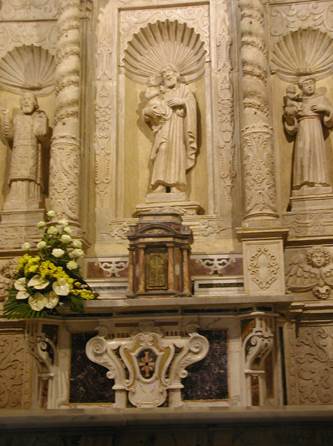


Casa Grotta (four images from web source)





Matera
Rupestrian Churchs (image
from web source)
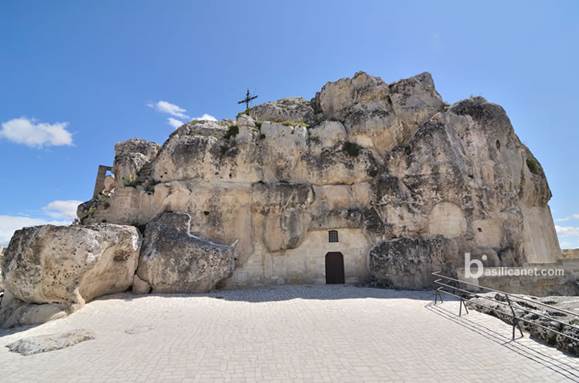
Santa Maria de
Idris and San Giovanni in Monterrone
(images from post cards)


++++++++++++++++++++++++++++++++++++++++++++++++++++++++++++++++++
Thursday, May 18
On the
road to Vieste with stop at Monte Saint Angelo
(image below and comment from Wikipedia)

Monte Sant'Angelo as a town appeared only in
the 11th century. Between 1081 and 1103, Monte Sant'Angelo was the capital of a
large Norman dominion under the control of Count
Henry, who was a vassal of the Byzantine
Empire. The grotto (above photo) which houses the Sanctuary
of Saint Michael the Archangel where according to legend, St.
Michael appeared in 490, 492 and 493, has been the site
of many famous pilgrimages, which started from Mont
Saint-Michel. Pope
John Paul II visited the sanctuary in 1987.

Arawjo Group
visiting Shrine of St. Michael the Archangel
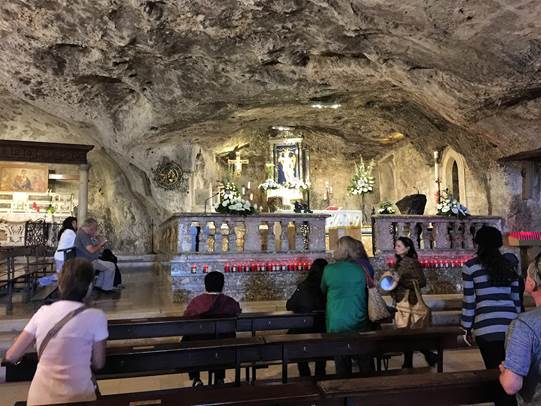

(image on right from postcard)

(Contemporary
chapel)
++++++++++++++++++++++++++++++++++++++++++++++++++++
Afternoon Visiting Vieste
Vieste is a town, comune and
former Catholic bishopric in the province of Foggia, in the Apulia region
of southeast Italy. A marine resort in
Gargano, Vieste has received Blue
Flags for the purity of its waters from the Foundation for
Environmental Education. The area covered by the comune
is included in the Gargano National Park.

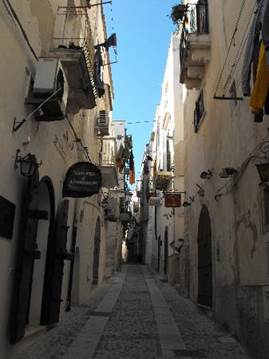
(two images above from Web Source)
++++++++++++++++++++++++++++++++++++++++++++++++++++++
Friday, May 19
Free time
in resort town of Vieste


(afternoon gelato break with Linda and
Tom)

Saturday, May 20
Special
Boat trip to Tremito Islands




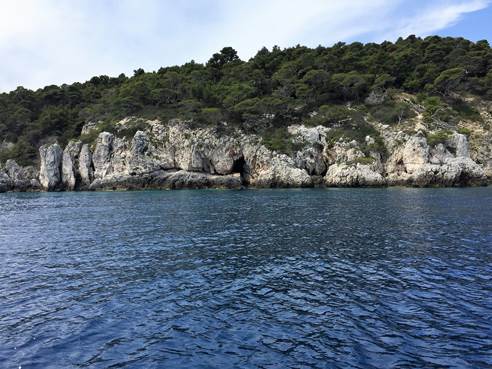

++++++++++++++++++++++++++++++++++++++++++++++++++++++++++++++
Sunday, May 21
Arrival
in Bari / City Tour
Bari is the capital city of the
Metropolitan City of Bari and of the Apulia region, on the Adriatic Sea in Italy. It is
the second most important economic center of mainland Southern Italy after Naples and is well
known as a port and university city,
as well as the city of Saint Nicholas. The city itself has a population of
about 326,799, as of 2015, over 116 square kilometres
(45 sq mi), while the urban area has
700,000 inhabitants. The metropolitan area has
1.3 million inhabitants.
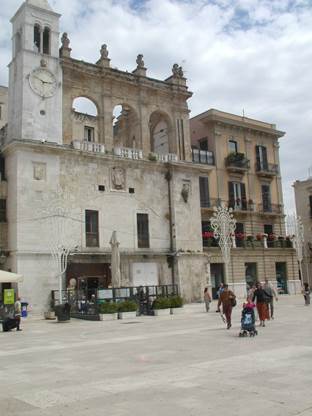

(very old theatre on square and pre-tour gelato)
Arawjo group in
front of Basilica of St. Nicholas

Basilica of St. Nicholas
(two images below from web source)


Cathedral of San Sabino
(two images below from web source)


NOTE: 65% images from Dianne cell phone; 35% from Jack camera;
All city information from Wikipedia
++++++++++++++++++++++++++++++++++++++++++++++++++++++++++
The End
Additional
Travel Photos at
http://www.retkuprof.com/TravelPhotos.html